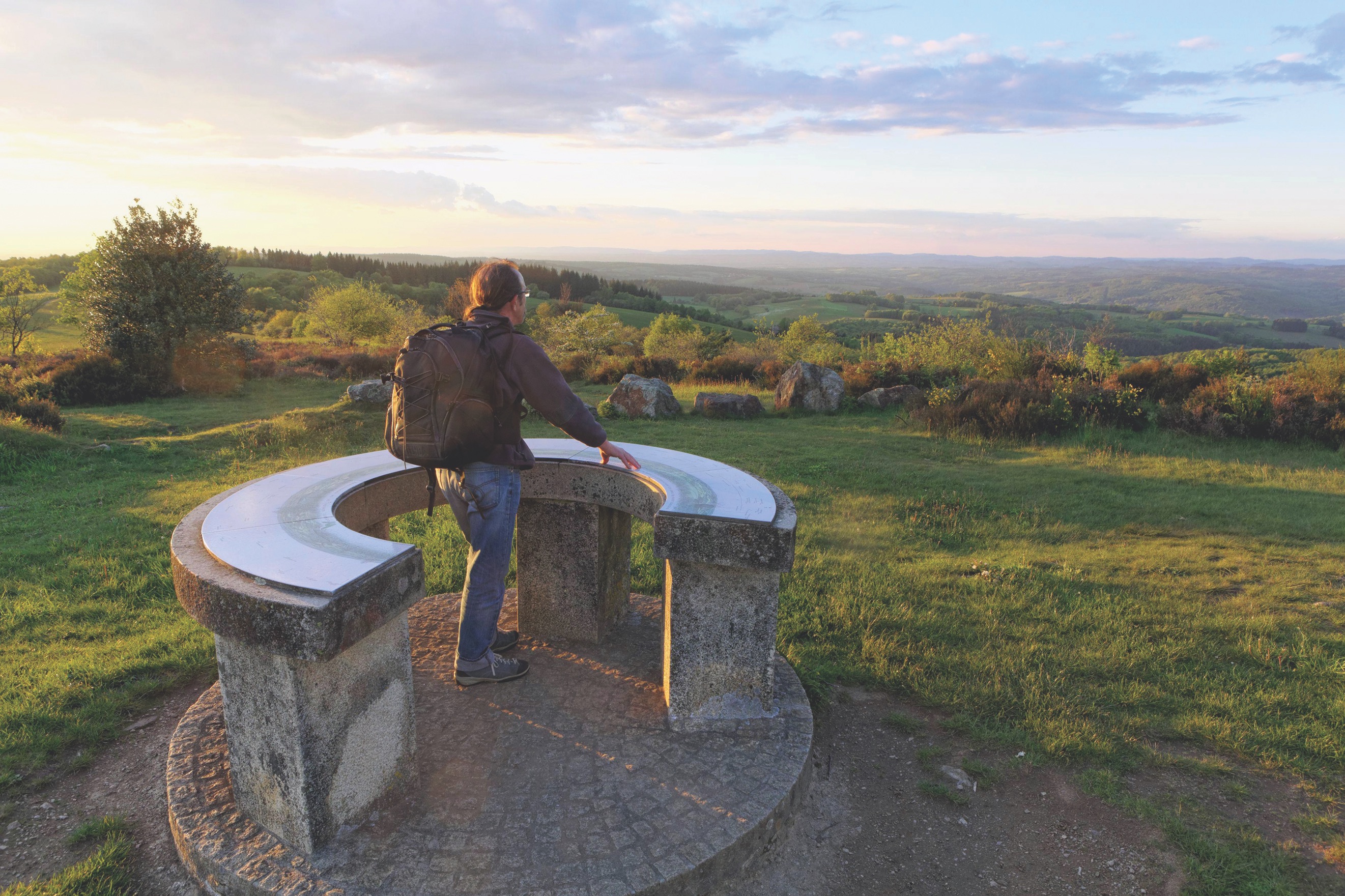In 1944, the Nazis attempted to vanquish Resistance leader Georges Guingouin’s rural guerrilla force in the Battle of Mont-Gargan.
Mont-Gargan in the heart of France is a peaceful place, its 2,400-foot peak topped by the ruins of the neo-Gothic Notre-Dame de Bon Secours chapel. From here, a pathway moseys to a prairie-covered point overlooking the surrounding Limousin countryside, a pastoral realm of chestnut woods, thousand-year-old villages, and sparkling streams. The sun falls beneath undulating maroon hills along the Massif Central’s western edge, casting a magical glow in a landscape that appears straight out of a 19th-century Romantic painting.
“Guingouin used to picnic here, after the war,” Claudine Legouffe from the Châteauneuf-la-Forêt tourist office tells me. “He loved the view.”
I try to wrap my head around that—the legendary Resistance leader, Georges Guingouin, who headed a famed 1944 assault against the Nazis at this very spot, enjoying a picnic with a view? But that was decades after he had gone underground, in 1941, to organize a Resistance network in the Limousin region—one of the largest Maquis groups of rural guerrilla fighters.
I come face to face with Guingouin—or at least a black-and-white photograph of him—at the Musée de la Résistance in Limoges, Limousin’s regional capital, which details local Resistance activities during World War II. With soft, friendly eyes peering from behind round glasses, he appears every bit the teacher he started out as in the nearby town of Saint-Gilles-les-Forêts. As he defended his communist ideals in the 1930s in this very left-wing region, publishing and distributing leaflets and making false identity cards, his charisma and teaching experience made him a natural leader.
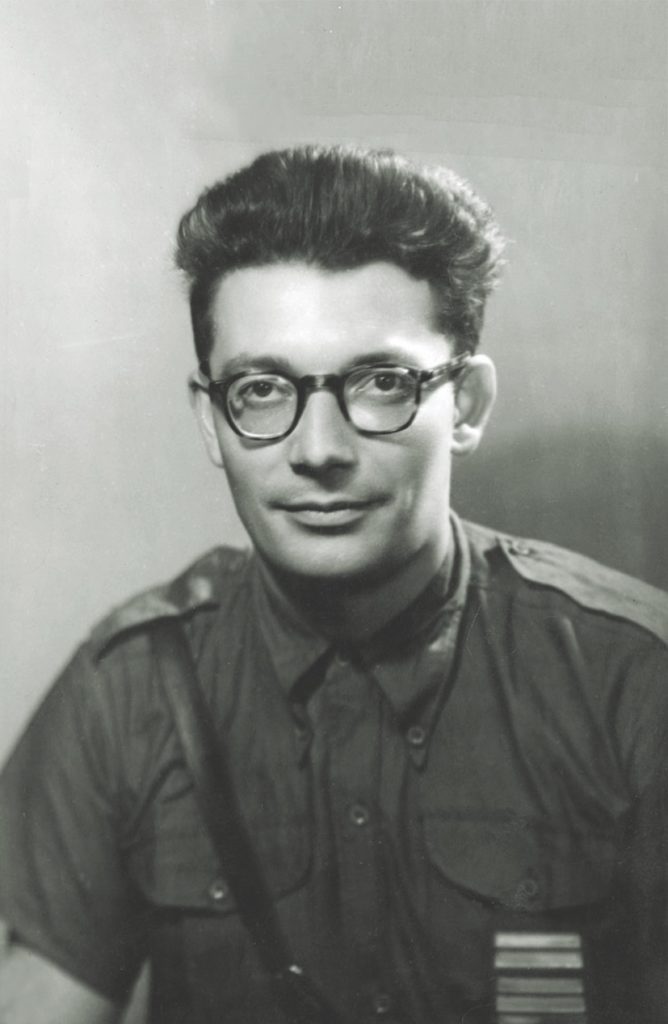
After the fall of France in 1940, when the Limousin region became a part of unoccupied Vichy France, Guingouin wrote a manifesto denouncing the collaborationist regime and Germany’s occupation of his country. Not surprisingly, he was fired from his teaching job for being a communist militant. Going undercover in February 1941, he organized small-scale Resistance activities in the countryside, growing a force of fellow Maquisards who stole ration cards from town halls and sabotaged balers to prevent farmers from supplying the Nazis with wheat, among other nefarious activities.
I head out with Claudine into the Limousin countryside, about 20 miles southeast of Limoges, to learn more about this man, the force he built to fight the Germans, and the battle of Mont-Gargan—one of the rare clashes in which Wehrmacht and Resistance fighters fought head-to-head—that earned him his lauded status.
Pulling into a picturesque farm in Saint-Méard, next to Châteauneuf-la-Forêt, I have the honor of meeting the last remaining Limousin Resistance fighter, René Arnaud. A spirited man of 95 years, he ushers me into his small country kitchen, his smiling wife hovering behind.
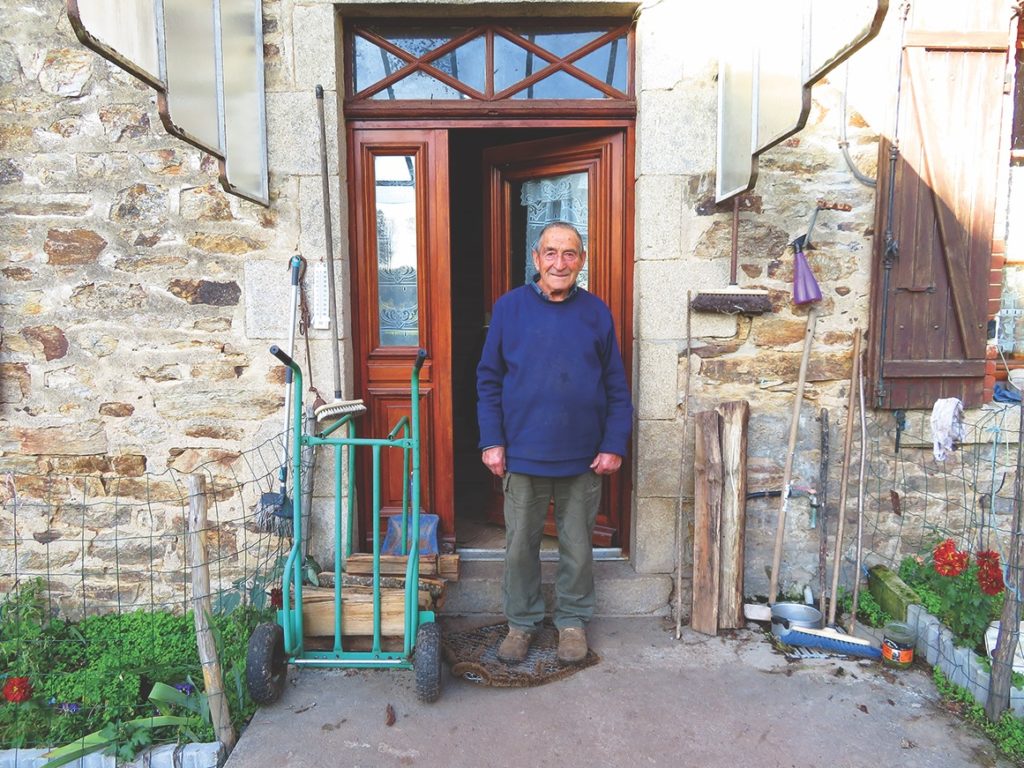
“I was 18 years old in 1943,” Arnaud says. “We weren’t free. We wanted to dance, and we were forbidden. We did it anyway. We can’t live in a world without liberté, fraternité.” And so he joined the Resistance.
Dressed in the dungarees and overcoat of a hardworking farmer, he speaks French using the local patois, his eyes bright with a far-off memory. “We blew up bridges, telephone lines, and the railroad,” he says.
Arnaud didn’t know Guingouin, who was an “un-known,” someone who could never expose himself. Arnaud was a “plain-sight” Maquisard, working as a farmer during the day and as a fighter at night.
Taking these stories with me, I head out to explore. In the forest just outside Châteauneuf-la-Forêt, I walk down a grassy clearing bordered by trees. If Claudine hadn’t pointed it out, I might have missed it. But there, after all these years, is Guingouin’s hideaway. Dug into the soft earth, its roof is made of chestnut piquets—a layer of dried leaves and earth, in turn covered and camouflaged with leaves and forest litter.
“Go inside!” Claudine urges. It is dark and damp, and my first instinct is “no”—but I descend anyway, ducking as I enter the cramped, fusty space. After Guingouin went underground, he hid from Vichy authorities in barns, friendly homes, and abandoned buildings. He and four comrades built this hideout in 1943, using only two shovels and two picks.
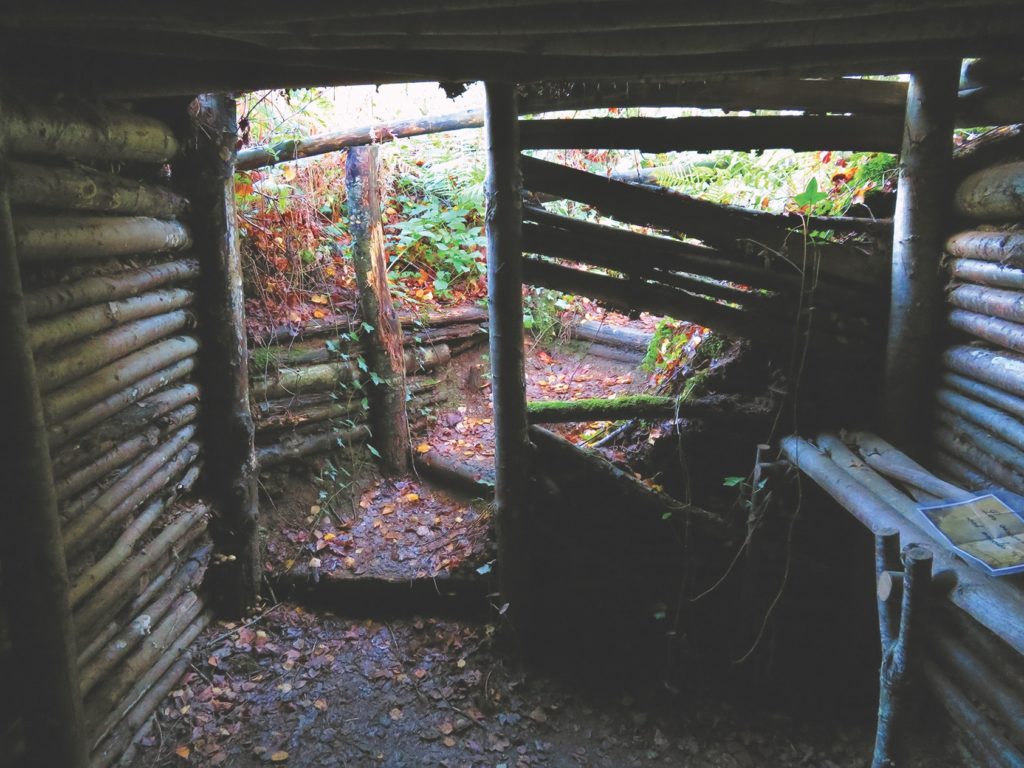
Back in the car, we start climbing up Mont-Gargan’s flanks. As we drive, Claudine fills me in on some of the events that followed.
In 1943, many young Frenchmen avoiding forced labor in Germany—service required by the Vichy-approved Service du Travail Obligatoire—joined the Resistance fight. “As Guingouin’s ranks grew, so did the brazenness of his acts, including stealing 3,900 pounds of dynamite from a German-guarded coal mine at Saint-Léonard on the night of January 25, 1943—and using it to destroy the Bussy-Varache viaduct two months later,” she says.
Twice in 1944 the Nazis came to the Limousin region to eliminate Guingouin’s Maquis. The first time was in April, when they arrested three Resistance fighters, questioning and torturing them before deporting them to concentration camps. They came again between July 17 and 24, after word got out that on July 14 the Allies had airdropped supplies on Mont-Gargan, on a saddle between Sussac and the mountain at the Clos de Sussac.
We stop at that airdrop site, a long, grassy expanse along the side of the mountain overlooking the glorious countryside. A placard explains what unfurled that day—“Opération Cadillac”—and I imagine the scene: 36 Flying Fortress heavy bombers—part of Lieutenant General James H. Doolittle’s U.S. Eighth Army Air Force, each loaded with 400 pounds of arms and supplies for the Resistance and escorted by 200 Spitfire fighters of the Royal Air Force—buzzed past at the low altitude of 350 feet, discharging their tricolor-parachuted packages at marked drop zones with targeted accuracy.
“The red, white, and blue of the parachutes was a symbol of hope on July 14, the French national day,” Claudine says.
We continue southward, to the outskirts of the village of Salon-la-Tour, where a cross and a stone monument stand at a crossroads. Claudine tells me, “Churchill and de Gaulle recruited special agents—women!” Among them was Violette Szabo, an Anglo-French undercover agent who parachuted into Nazi-occupied France to aid the Resistance movement. “She was very beautiful,” Claudine says. “All the boys wanted to see the ‘American’—because she spoke English.”
Alas, on June 10, 1944, while carrying the message to local Resistance leaders that any German troop movements heading north toward Normandy should be hindered, Szabo’s car was ambushed by SS soldiers. She and her two male companions fled across the fields; the men escaped, but Szabo was captured, then tortured and eventually shot in the neck at Ravensbrück extermination camp in Germany in 1945. She was only 23 years old. The memorial marks the intersection where she was captured.
Off the D39A, we pull into a small “Garden of Memory,” where we come close to the illustrious man himself, buried next to his wife after he died in 2005 at age 92, surrounded by the wilderness he loved. Guingouin’s tiny school still stands in the nearby town of Saint-Gilles-les-Forêts as a silent witness to where it all started.
The drive to the summit of Mont-Gargan opens up commanding views of the Limousin countryside. At the top, we stroll along a lane of towering beeches, passing Guingouin’s picnic spot and then the ruins of Notre-Dame de Bon Secours chapel, built between 1868 and 1871. We walk through prairie brush to an overlook, and I imagine what transpired around me during that seven-day battle. Aware that the Nazis had learned about the July 14 drop, Guingouin and his Maquis fighters sped to hide the weapons and ammunition they had received on the mountain and lay in wait for the Germans.
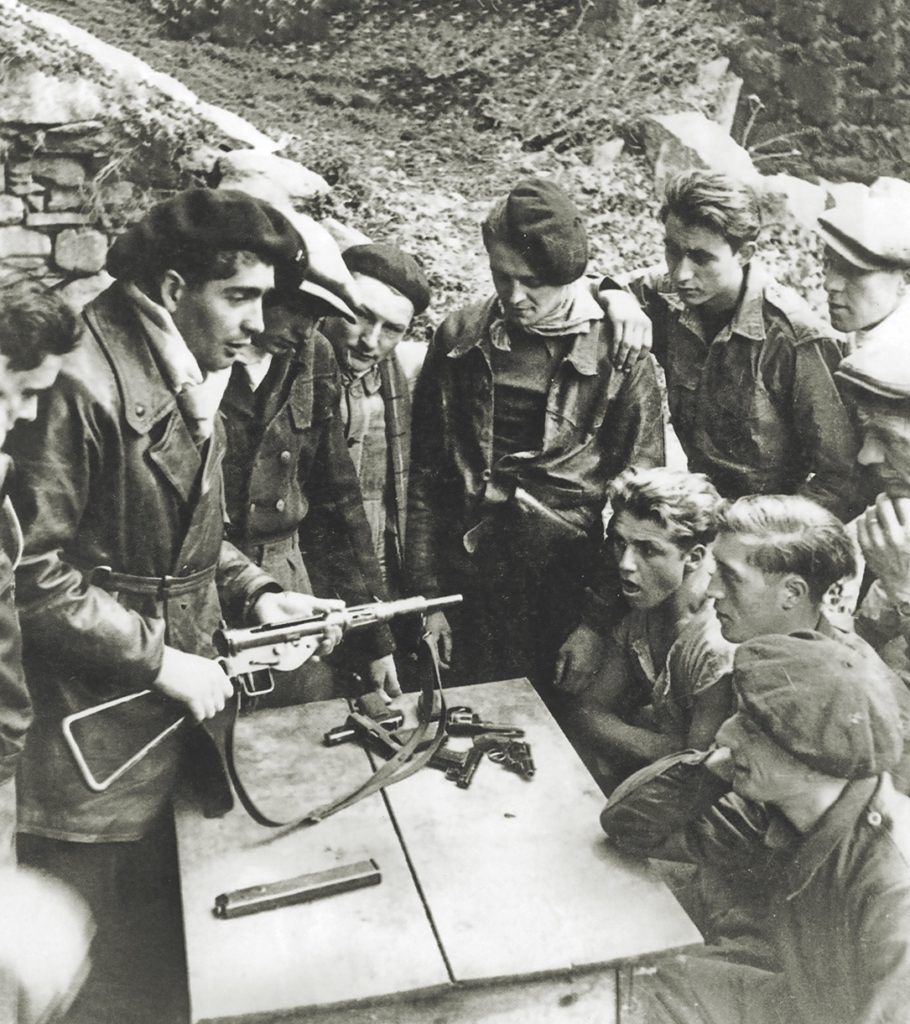
Sure enough, the Wehrmacht soldiers—committed to finishing off the Maquis—started arriving on July 16. Skirmishes erupted on Mont-Gargan and throughout the region. René Arnaud was part of this battle. “We didn’t eat or drink for three days, because we had to fight,” he says.
In the end, 38 Maquisards died, with 54 injured and five missing; losses on the German side were three times higher. Even so, the Germans took the mount—but by then, the Resistance had managed to slow the enemy troops’ advance and had secured their precious arms to continue the fight. Mission accomplished.
Just a little over a month later, it all ended, at least locally. Guingouin and his fellow Maquis surrounded the city of Limoges, and the occupying Nazis, realizing they were trapped, lay down their arms and fled.
As we return to Limoges that night, driving through its quiet streets, I imagine the evening of August 21, 1944, when the Resistance fighters entered the city to the cheers of welcoming crowds. Arnaud says he was part of the exuberant festivities, and I picture him as a young man celebrating victory with his comrades—before returning to his farm to get back to work. ✯
WHEN YOU GO
Limoges is located about 250 miles south of Paris and is easily accessible by train. The Musée de la Résistance is located at 7 rue Neuve Saint-Étienne. You’ll need a car to tour the Limousin countryside—pick up maps and info at the Office de Tourisme Briance Combade in Châteauneuf-la-Forêt. Your best bet is to hire a guide; the tourist office can provide a list, which includes children of Resistance fighters.
Where to Stay and Eat
Limoges is a pretty city with plenty of hotels and restaurants. Hôtel les Beaux Arts occupies a 19th-century building in the town center. For traditional fare—including pig’s trotter crépinette and pot-au-feu—try Chez Alphonse in the city’s historic Quartier du Château.
What Else to See and Do
Limoges is famous for its hard-paste porcelain, produced in the region beginning in the late 18th century. Les Routes de la Porcelaine has a downloadable brochure to help plan visits to factories, shops, and museums.
On June 10, 1944, Nazis massacred 642 residents of the Limousin village of Oradour-sur-Glane. Charles de Gaulle ordered the village be kept exactly as it was on that day as a memorial, complete with roofless buildings, rusting cars, and bikes leaning against charred walls. ✯
This article was published in the April 2021 issue of World War II.

